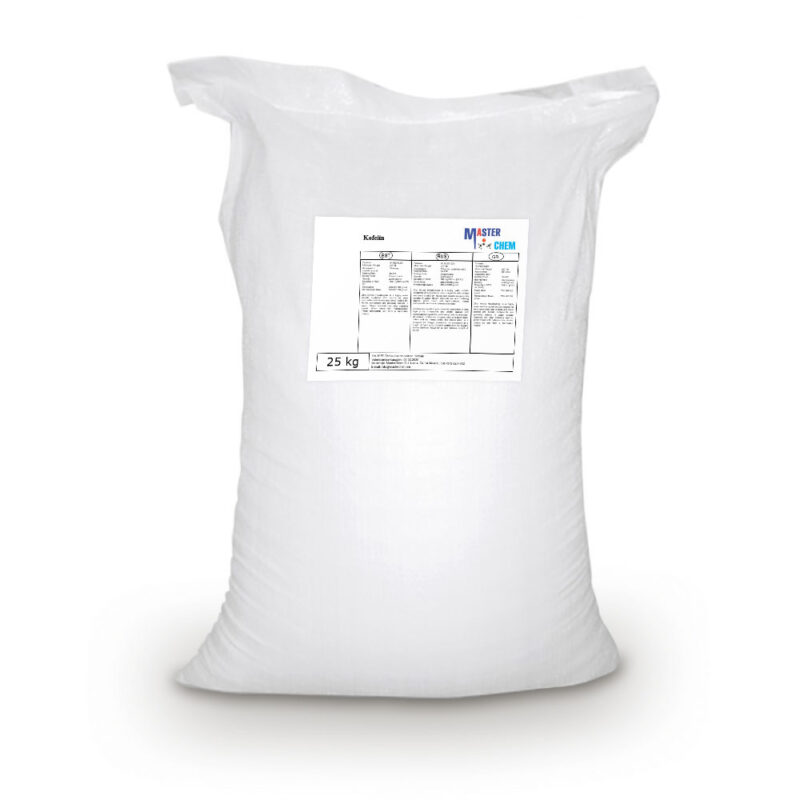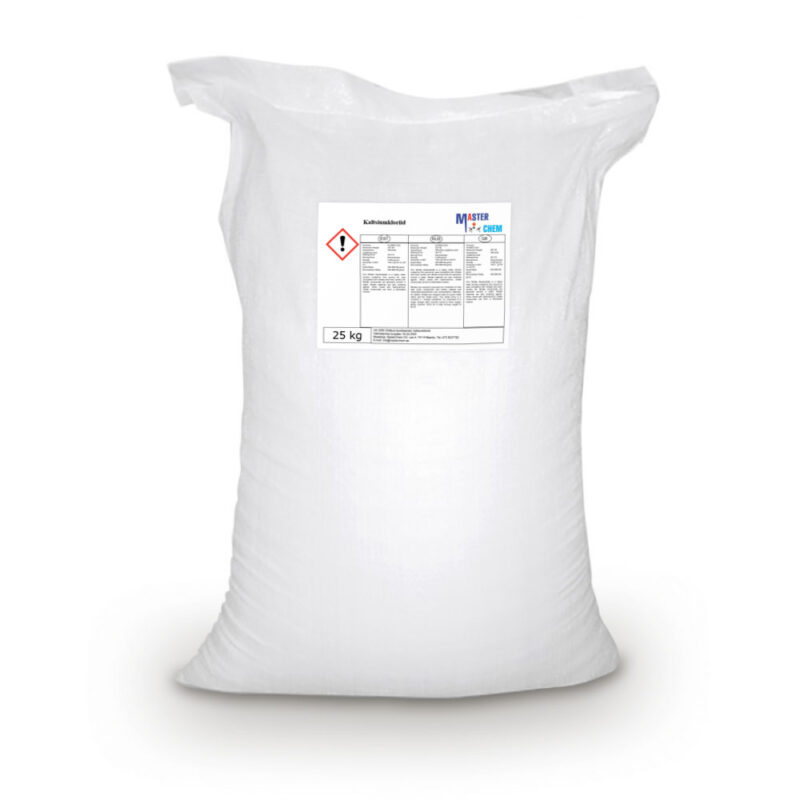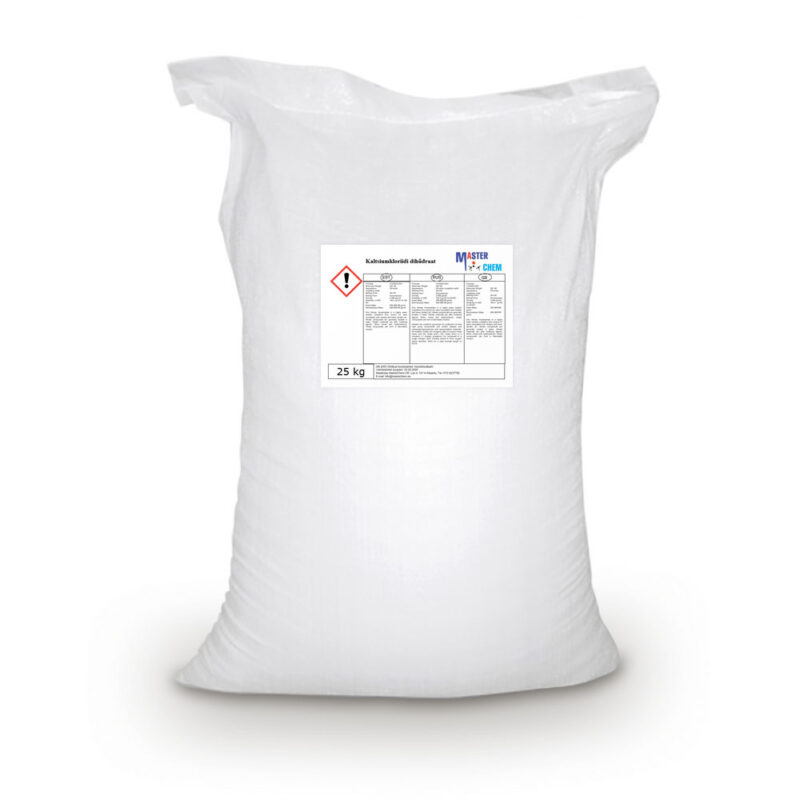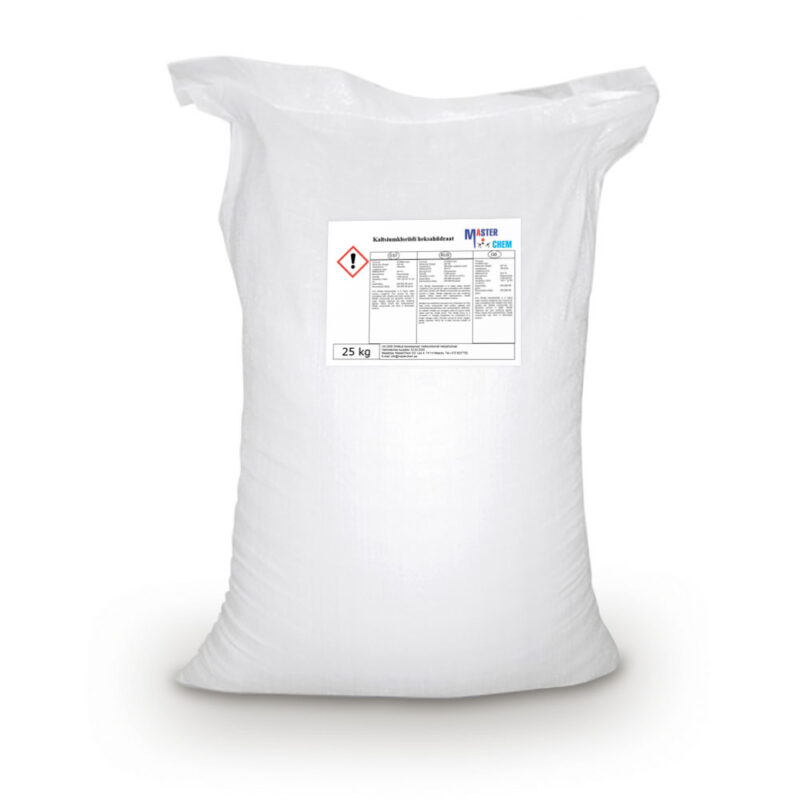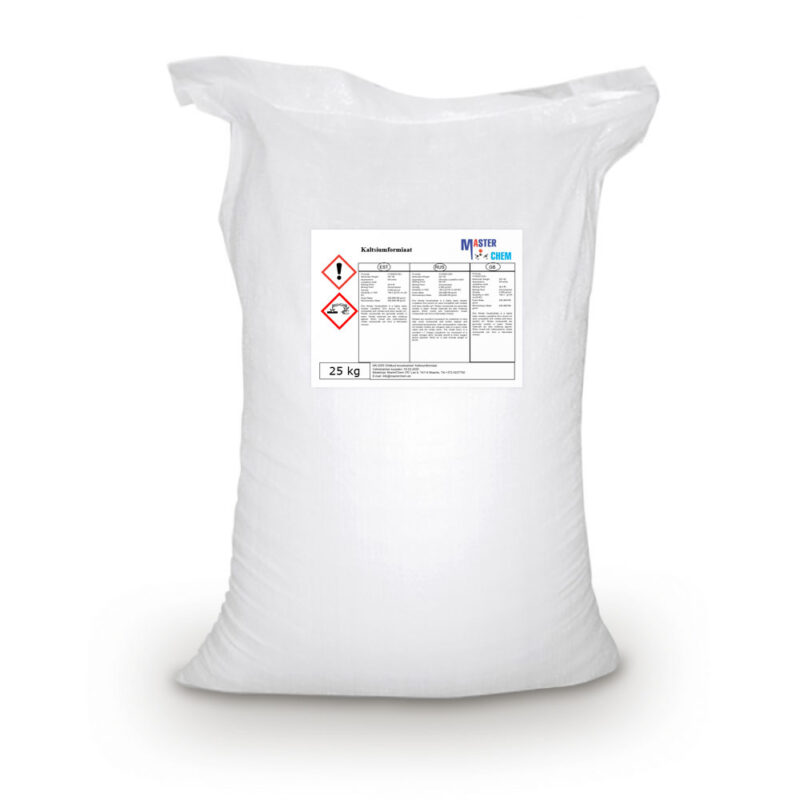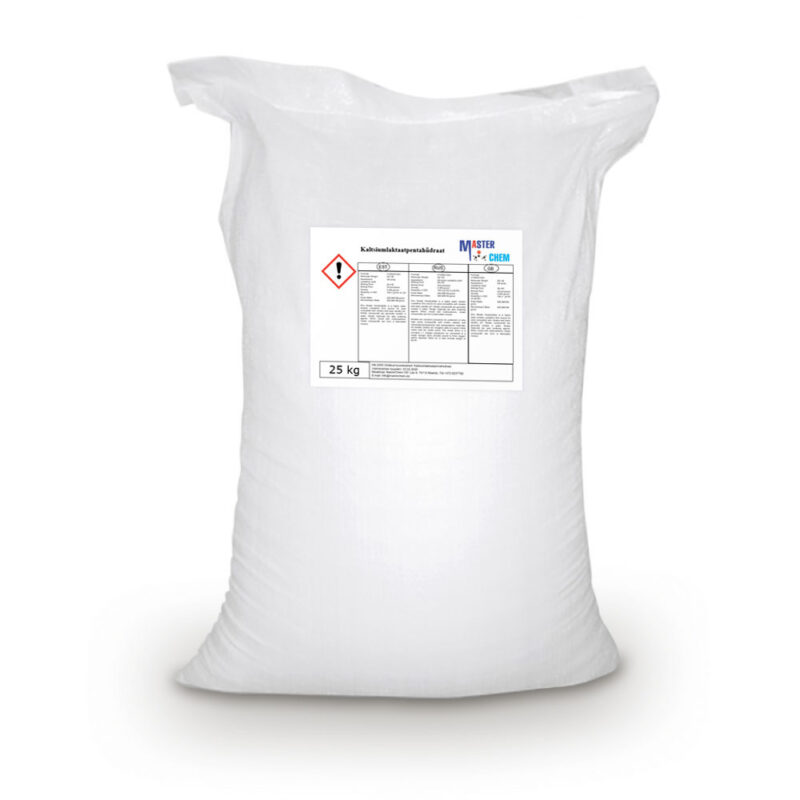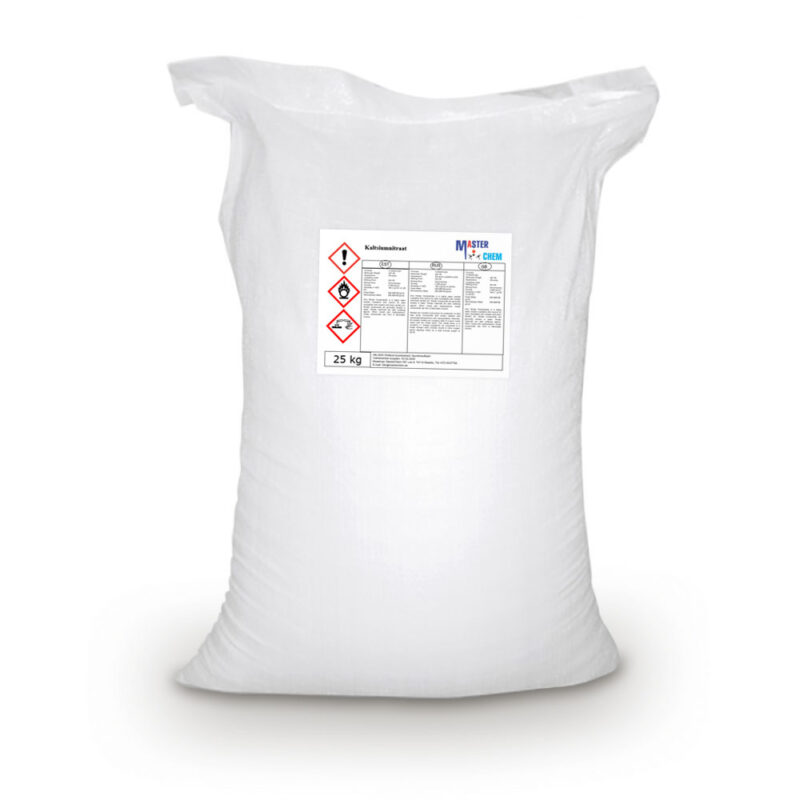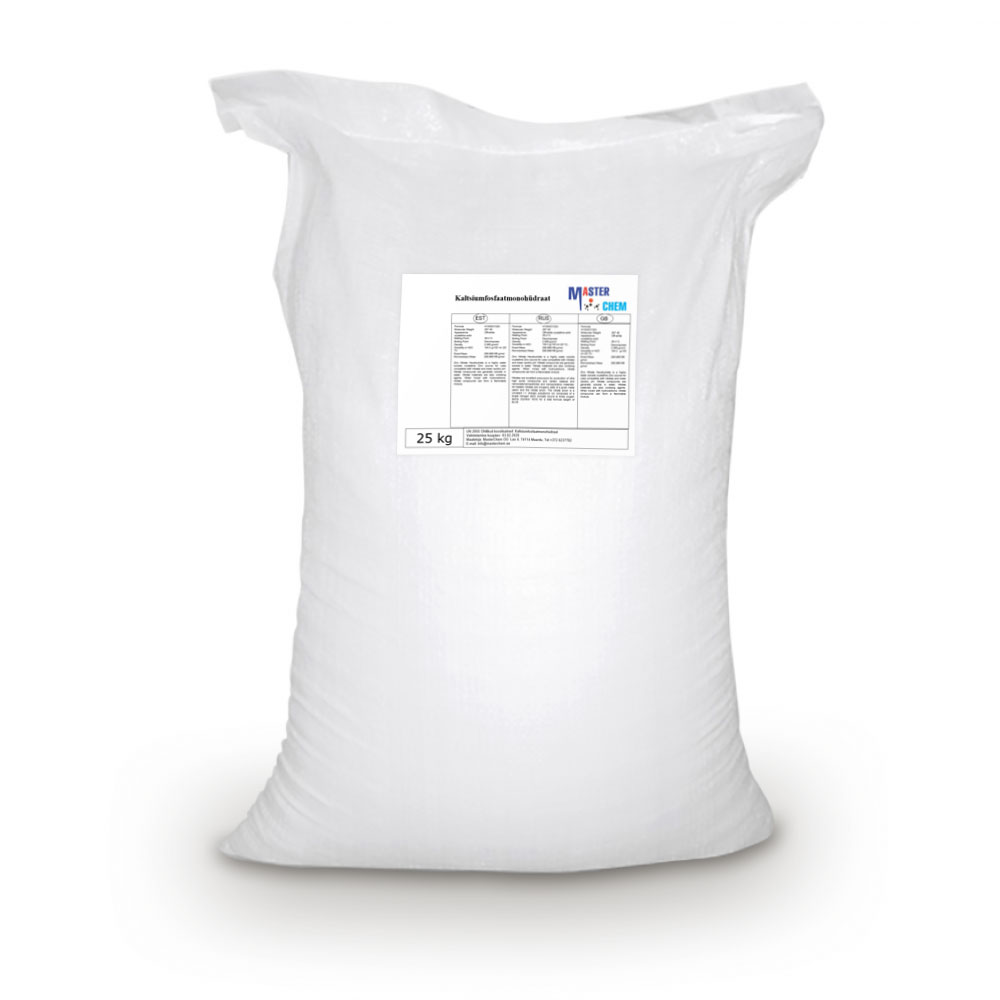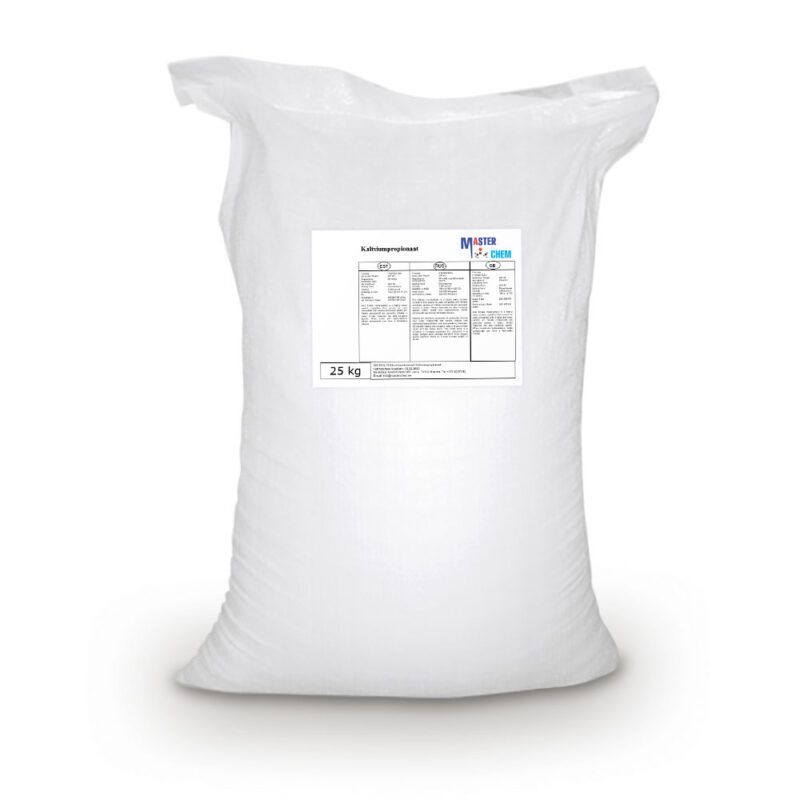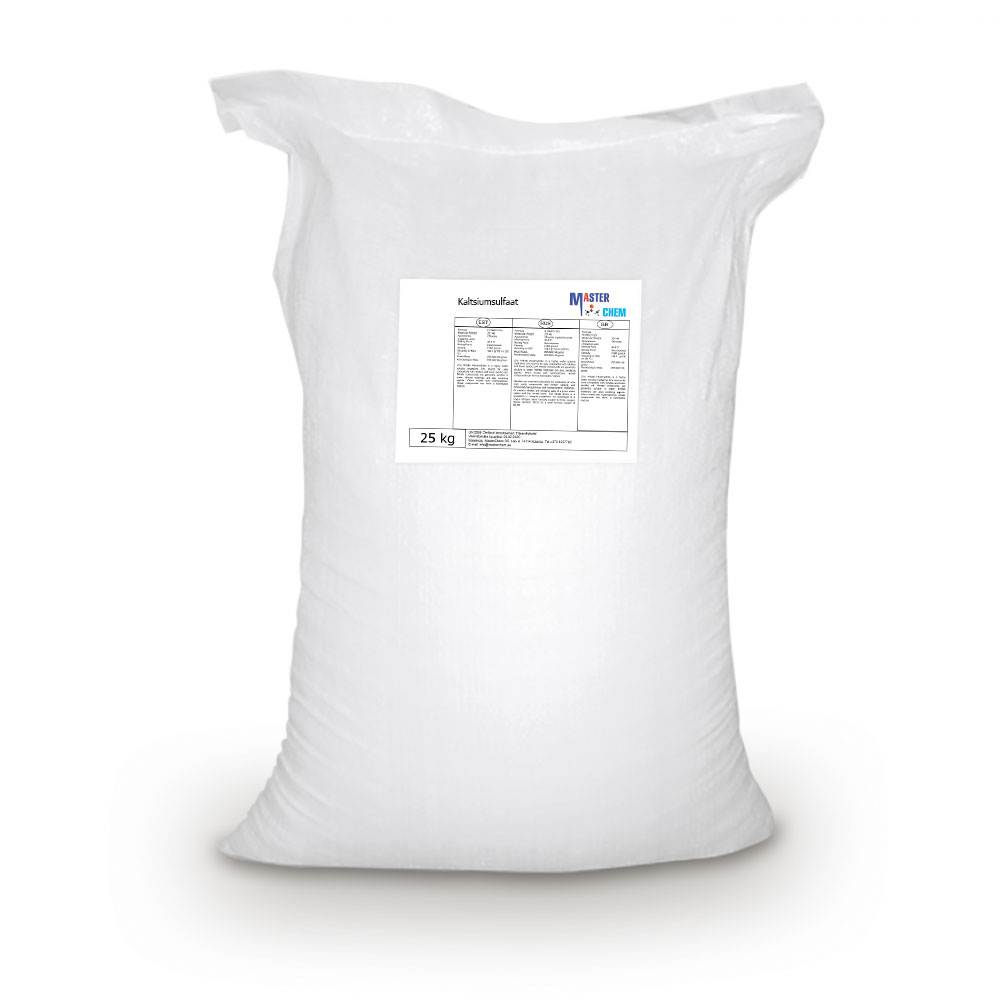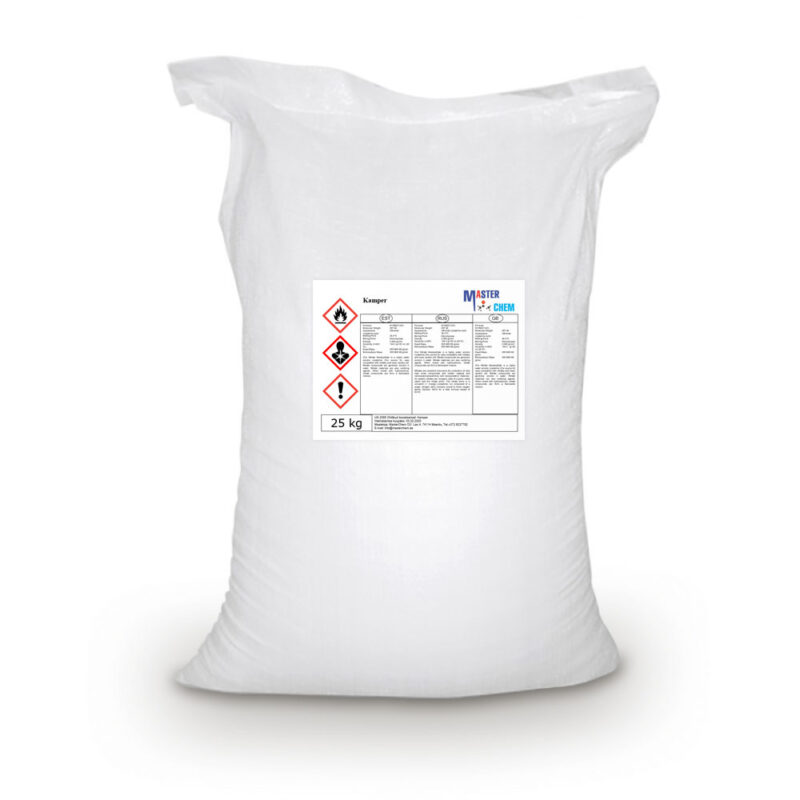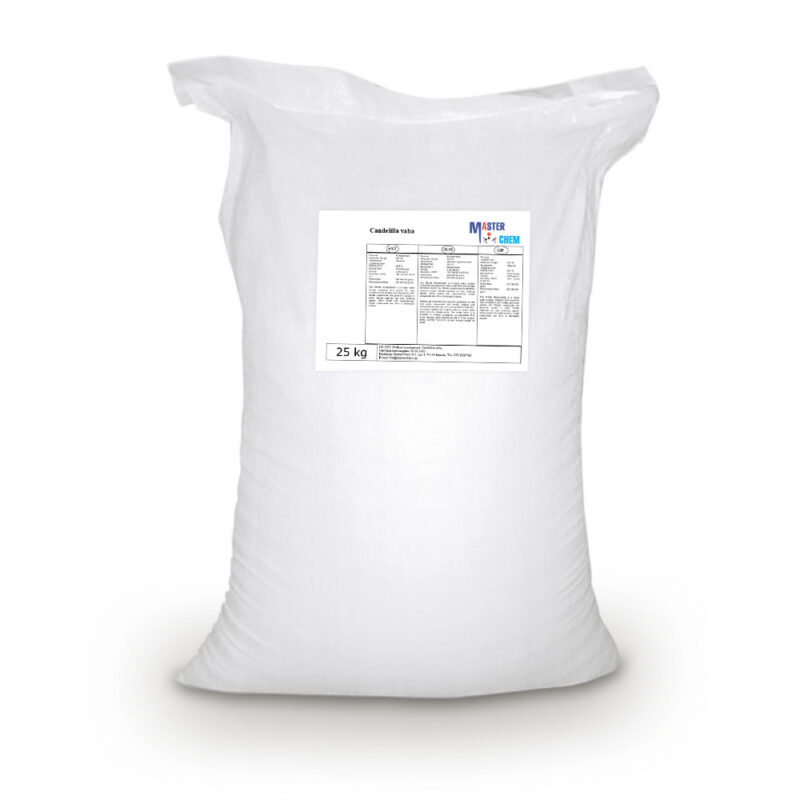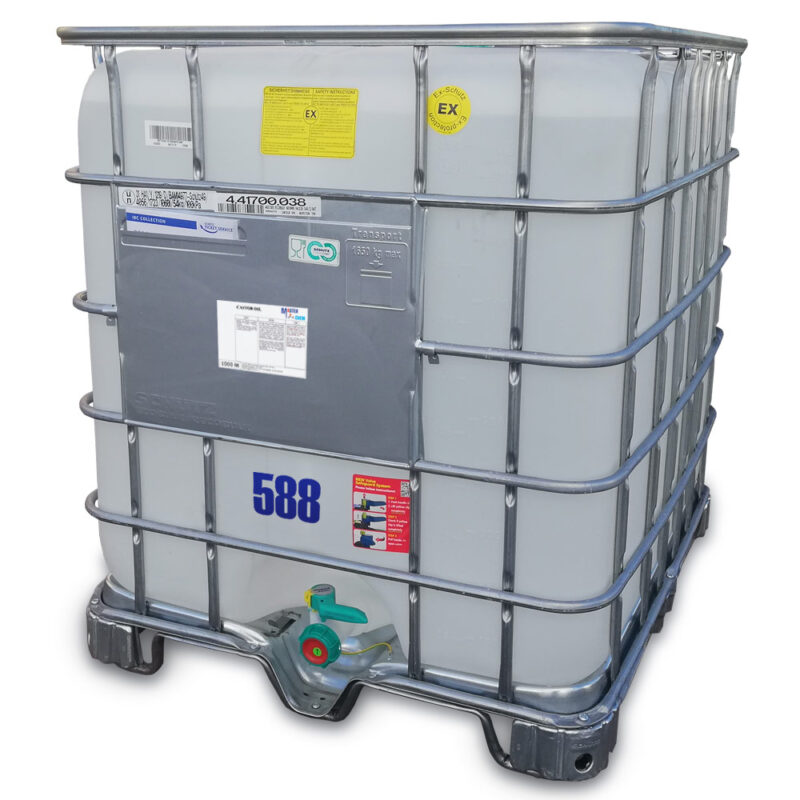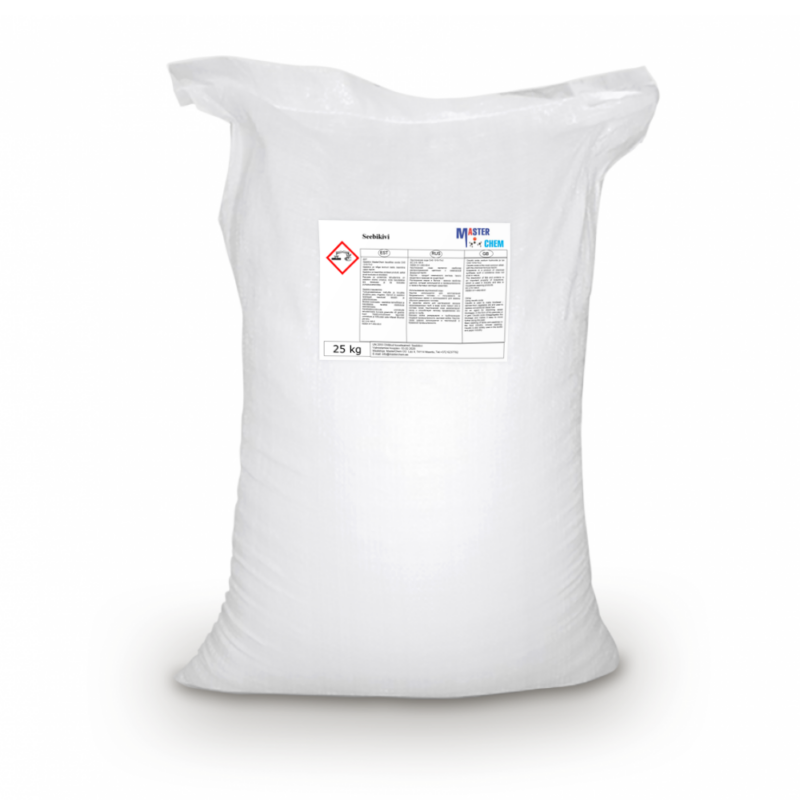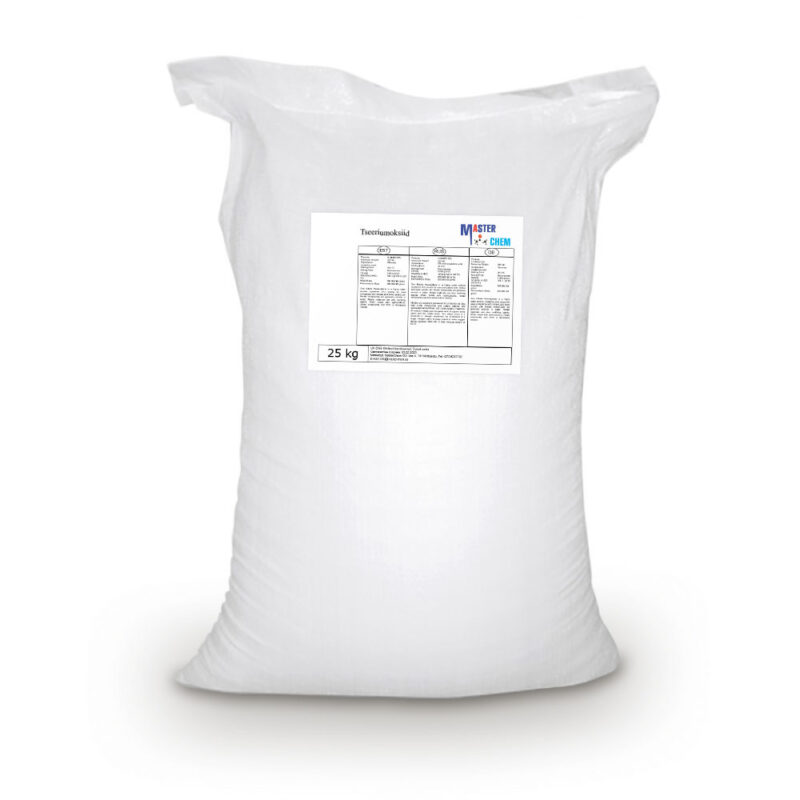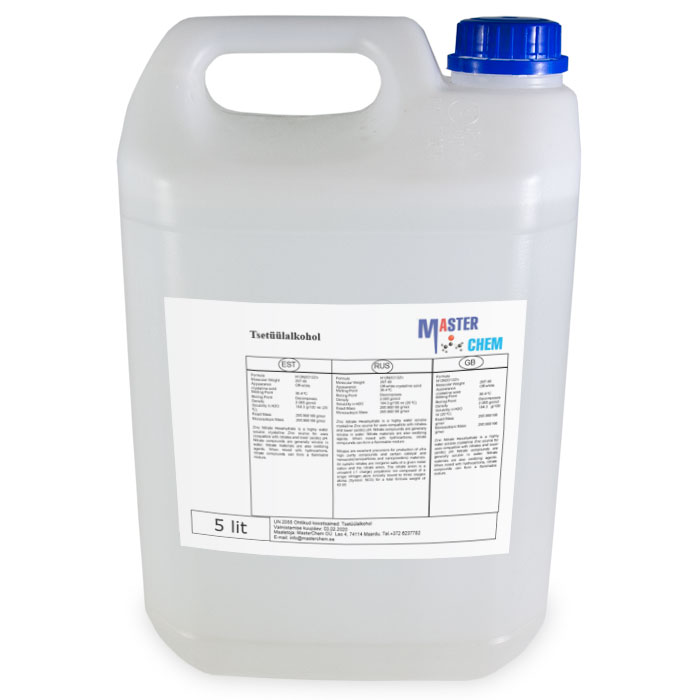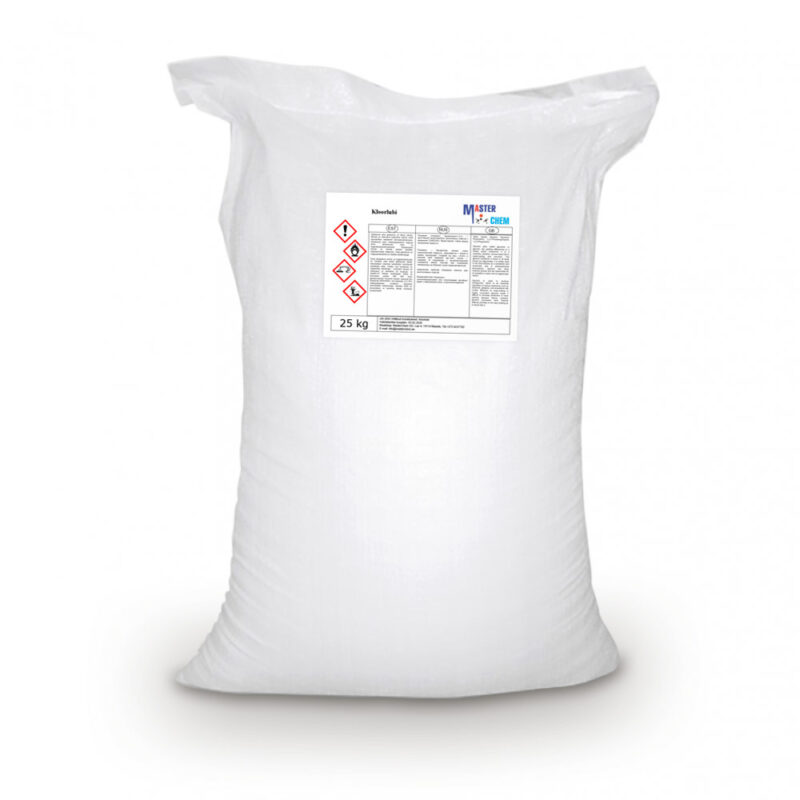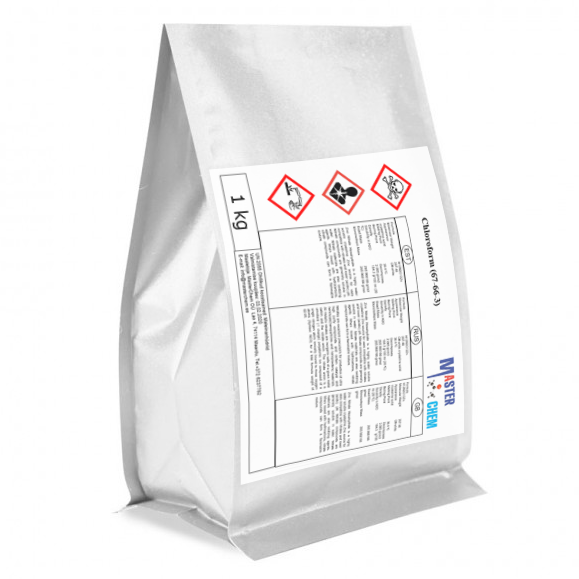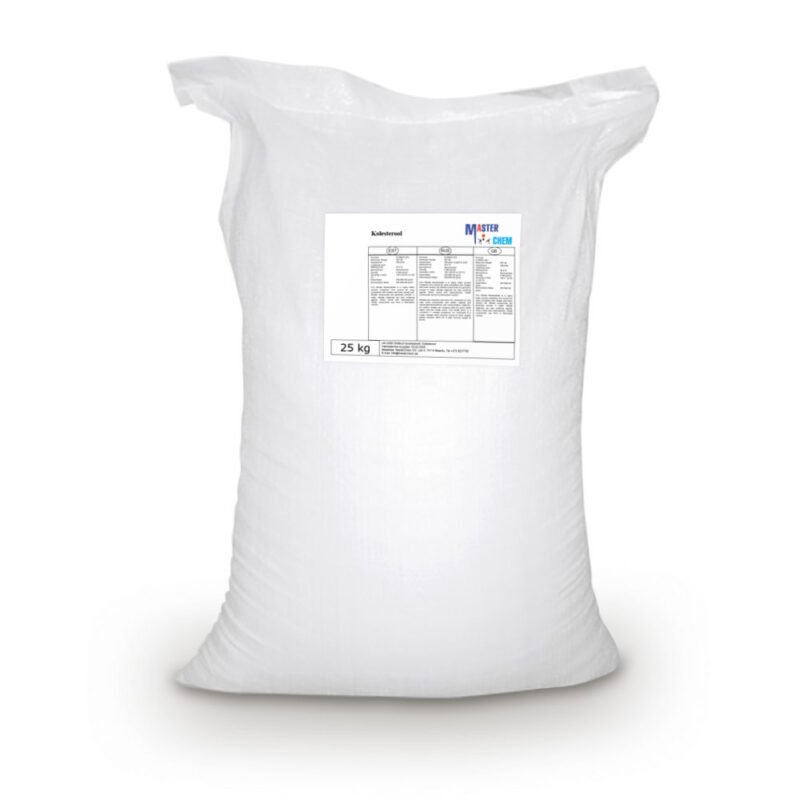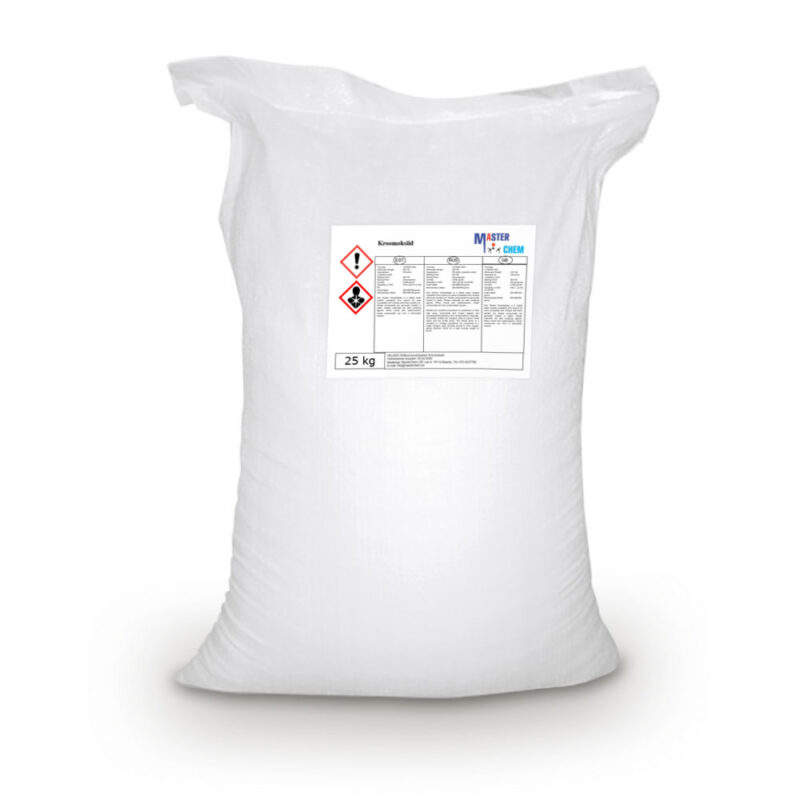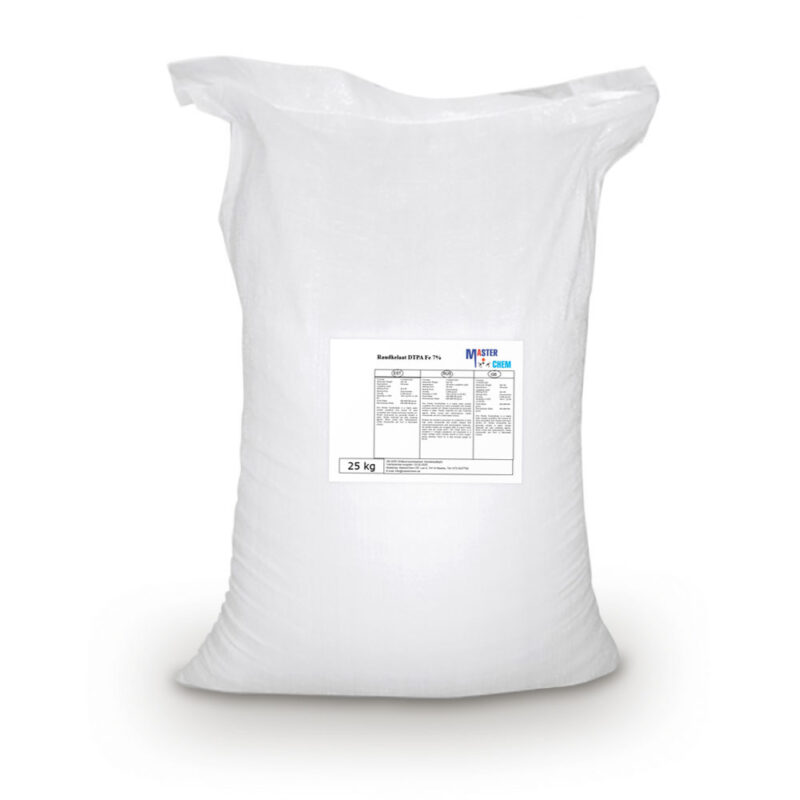Caffeine (CAS 58-08-2)
Caffeine (CAS 58-08-2)
Trimethylated xanthine that acts as a potent central nervous system stimulant. At higher doses, produces tachycardia and interferes with the uptake and storage of Ca2+ by the sarcoplasmic reticulum in skeletal muscle. Prevents apoptosis and cell cycle effects induced by Camptothecin (Cat. No. 208925) and topotecan in HL-60 cells.
Caffeine, CAS 58-08-2, is a trimethylated xanthine that acts as a potent central nervous system stimulant. At higher doses, produces tachycardia.
Calcium chloride (CAS 10043-52-4)
Calcium chloride (CAS 10043-52-4)
Calcium chloride (CAS 10043-52-4)
Calcium chloride is an inorganic compound, a salt with the chemical formula CaCl2. It is a white coloured crystalline solid at room temperature, and it is highly soluble in water. It can be created by neutralising hydrochloric acid with calcium hydroxide.
Calcium chloride is commonly encountered as a hydrated solid with generic formula CaCl2(H2O)x, where x = 0, 1, 2, 4, and 6. These compounds are mainly used for de-icing and dust control. Because the anhydrous salt is hygroscopic, it is used as a desiccant.
Calcium chloride dihydrate (CAS 10035-04-8)
Calcium chloride dihydrate (CAS 10035-04-8)
Calcium chloride is an inorganic compound, a salt with the chemical formula CaCl2. It is a white crystalline solid at room temperature, and it is highly soluble in water. It can be created by neutralising hydrochloric acid with calcium hydroxide.
Calcium chloride is commonly encountered as a hydrated solid with generic formula CaCl2·xH2O, where x = 0, 1, 2, 4, and 6. These compounds are mainly used for de-icing and dust control. Because the anhydrous salt is hydroscopic and deliquescent, it is used as a desiccant.
Calcium chloride hexahydrate (CAS 7774-34-7)
Information Industries: Household chemicals, Fertilizers, Horticulture, Pharmaceutical industry, Building chemistry CAS number: 7774-34-7 WE number: 233-140-8 Chemical formula: CaCl2•6H2O Molar …
Calcium formate (CAS 544-17-2)
Calcium formate (CAS 544-17-2)
Calcium formate is the calcium salt of formic acid. It is also known as E238. Under this E number it is used as an animal feed preservative within EU, but not in foods intended for people. Calcium formate is stable at room temperature, is inflammable and forms orthorhombic crystals. The mineral form is very rare and called formicaite, and is known from a few boron deposits.
Calcium formate is used within EU as an animal feed preservative. It acidifies the feed thus preventing microbe growth and increasing shelf life. About 15 g of calcium formate addition per kg of feed lowers its pH by one. 15 g/kg is the maximum recommended feed concentration within EU – this level is thought to be safe for pigs, chickens, fish and ruminants. The compound is not environmentally harmful in feed use at these levels. Calcium formate prevents the growth bacteria such as E. coli, Pseudomonas aeruginosa, Staphylococcus aureus and Enterococcus hirae in growth mediums. It also prevents the growth of fungi like Aspergillus niger and Candida albicans. However, the relevance of these experimental observations to feed preservation is not known.
Calcium lactate pentahydrate (CAS 28305-25-1)
Calcium lactate pentahydrate (CAS 28305-25-1)
Calcium lactate is produced by mixing lactic acid with calcium carbonate or calcium hydroxide. It has high solubility and dissolving speed, high bioavailability, good taste. It’s a good source of calcium used widely in food &beverage, health products, pharmaceutical and others fields.
– Chemical name: Calcium Lactate
– Standard: Food grade FCC
– Appearance: crystalline powder
– Color: white to cream color
– Odor: almost odorless
– Solubility: Freely soluble in hot water
– Molecular formula: C6H10CaO6·5H2O
– Molecular weight: 308.3 g/mol
Calcium nitrate (CAS 10124-37-5)
Calcium nitrate (CAS 10124-37-5)
Calcium nitrate, also called Norgessalpeter (Norwegian salpeter), is an inorganic compound with the formula Ca(NO3)2(H2O)x. The anhydrous compound, which is rarely encountered, absorbs moisture from the air to give the tetrahydrate. Both anhydrous and hydrated forms are colourless salts. Calcium nitrate is mainly used as a component in fertilizers, but it has other applications. Nitrocalcite is the name for a mineral which is a hydrated calcium nitrate that forms as an efflorescence where manure contacts concrete or limestone in a dry environment as in stables or caverns. A variety of related salts are known including calcium ammonium nitrate decahydrate and calcium potassium nitrate decahydrate.
Calcium Phosphate Monohydrate (CAS 7758-23-8)
Calcium Phosphate Monohydrate (CAS 7758-23-8)
Monocalcium phosphate is an inorganic compound with the chemical formula Ca(H2PO4)2 (“AMCP” or “CMP-A” for anhydrous monocalcium phosphate). It is commonly found as the monohydrate (“MCP” or “MCP-M”), Ca(H2PO4)2·H2O. Both salts are colourless solids. They are used mainly as superphosphate fertilizers and are also popular leavening agents.
Other names
Acid calcium phosphate
Calcium acid phosphate
Calcium diorthophosphate
Calcium biphosphate
Calcium superphosphate
Monobasic calcium phosphate
Monocalcium orthophosphate
Phosphoric acid, calcium salt (2:1)
Calcium propionate (CAS 4075-81-4)
Calcium propionate (CAS 4075-81-4)
As a food additive, it is listed as E number 282 in the Codex Alimentarius. Calcium propionate is used as a preservative in a wide variety of products, including: bread, other baked goods, processed meat, whey, and other dairy products. In agriculture, it is used, amongst other things, to prevent milk fever in cows and as a feed supplement. Propionates prevent microbes from producing the energy they need, like benzoates do. However, unlike benzoates, propionates do not require an acidic environment.
Calcium stearate (CAS 1592-23-0)
Calcium stearate (CAS 1592-23-0)
Calcium stearate is a carboxylate of calcium, classified as a calcium soap. It is a component of some lubricants, surfactants, as well as many foodstuffs. It is a white waxy powder.
Calcium stearate is a waxy material with low solubility in water, unlike traditional sodium and potassium soaps. It is also easy and cheap to produce, and exhibits low toxicity. These attributes are the basis of many of its applications. Related applications exist for the magnesium stearate.
Calcium stearate is used as a flow agent and surface conditioner in some candies such as Smarties, jawbreakers and Sprees. It is a waterproofing agent for fabrics. A lubricant in pencils and crayons. A lubricant in the dry drawing method of wire production
Calcium sulphate (CAS 7778-18-9)
Calcium sulphate (CAS 7778-18-9)
Calcium sulfate (or calcium sulphate) is the inorganic compound with the formula CaSO4 and related hydrates. In the form of γ-anhydrite (the anhydrous form), it is used as a desiccant. One particular hydrate is better known as plaster of Paris, and another occurs naturally as the mineral gypsum. It has many uses in industry. All forms are white solids that are poorly soluble in water. Calcium sulfate causes permanent hardness in water.
Camphor (CAS 21368-68-3)
Camphor (CAS 21368-68-3)
Camphor appears as a colorless or white colored crystalline powder with a strong mothball-like odor. About the same density as water. Emits flammable vapors above 150°F. Used to make moth proofings, pharmaceuticals, and flavorings.
Candelilla wax (CAS 8006-44-8)
Candelilla wax (CAS 8006-44-8)
Candelilla wax is a wax derived from the leaves of the small Candelilla shrub native to northern Mexico and the southwestern United States, Euphorbia cerifera and Euphorbia antisyphilitica, from the family Euphorbiaceae. It is yellowish-brown, hard, brittle, aromatic, and opaque to translucent.
It is mostly used mixed with other waxes to harden them without raising their melting point. As a food additive, candelilla wax has the E number E 902 and is used as a glazing agent. It also finds use in cosmetic industry, as a component of lip balms and lotion bars. One of its major uses is as a binder for chewing gums.
Candelilla wax can be used as a substitute for carnauba wax and beeswax. It is also used for making varnish.
Carnauba wax (CAS 8015-86-9)
Carnauba wax (CAS 8015-86-9)
Carnauba wax occurs as a light brown- to pale yellow-colored powder, flakes, or irregular lumps of a hard, brittle wax. It has a characteristic bland odor and practically no taste. It is free from rancidity. Various types and grades are available commercially.
Wherever a hard, high-polish wax is desired, e.g. in automobile waxes, floor wax emulsions, high quality shoe polishes, in the paper industry (especially for making carbon papers). As a plasticizer in dental impression compounds. To raise the melting point of other waxes; often used together with candelilla wax. The presence of the lower-melting ouricury wax is considered as an adulteration. Purified and bleached carnauba wax is used for cosmetic materials, such as depilatories and deodorant sticks. In pharmacy as the last stage in tablet coating. Skin sensitization or irritation by carnauba wax seems infrequent.
Uses carnauba wax is used to firm and texturize cosmetic preparations, and give them a less fluid consistency. Carnauba wax also forms a protective layer on the skin’s surface. It has the highest melting point among natural plant waxes and does not usually cause allergic reactions. This wax is obtained from leaves and leaf buds of the Brazilian wax palm.
Uses Carnauba Wax is a general purpose food additive that is a hard and brittle wax. it is obtained from the leaf buds and leaves of the brazilian wax palm copernicia cerifera. it is the hardest wax known and is used in candy glaze.
Castor oil (CAS 8001-79-4)
Castor oil is a vegetable oil obtained by pressing the seeds of the castor oil plant (Ricinus communis). The common name “castor oil”, from which the plant gets its name, probably comes from its use as a replacement for castoreum, a perfume basemade from the dried perineal glands of the beaver
CAS 8001-79-4
Caustic soda (CAS 1310-73-2)
Caustic soda, sodium hydroxide ja lye CAS 1310-73-2
Caustic soda is the most common alkali, with the chemical formula NaOH.
Soapstone is a product of chemical synthesis, such a substance does not exist in nature.
The dissolution of fats and proteins is an important property of soapstone, which is used in industry and also in household cleaning products.
EC 215-185-5
INDEX 011-002-00-6
Cerium oxide (CAS 1306-38-3)
Cerium oxide (CAS 1306-38-3)
Cerium(IV) oxide, also known as ceric oxide, ceric dioxide, ceria, cerium oxide or cerium dioxide, is an oxide of the rare-earth metal cerium. It is a pale yellow-white powder with the chemical formula CeO2. It is an important commercial product and an intermediate in the purification of the element from the ores. The distinctive property of this material is its reversible conversion to a non-stoichiometric oxide.
Cetyl alcohol (CAS 36653-82-4)
Cetyl alcohol (CAS 36653-82-4)
Cetyl alcohol, also known as hexadecan-1-ol and palmityl alcohol, is a C-16 fatty alcohol with the formula CH3(CH2)15OH. At room temperature, cetyl alcohol takes the form of a waxy white solid or flakes. The name cetyl derives from the whale oil (cetacea oil, from Latin: cetus, lit. ’whale’, from Ancient Greek: κῆτος, romanized: kētos, lit. ’huge fish’) from which it was first isolated.
Cetyl alcohol is used in the cosmetic industry as an opacifier in shampoos, or as an emollient, emulsifier or thickening agent in the manufacture of skin creams and lotions. It is also employed as a lubricant for nuts and bolts, and is the active ingredient in some “liquid pool covers” (forming a non-volatile surface layer to reduce water evaporation, related latent vaporization heat loss, and thus to retain heat in the pool). Moreover, it can also be used as a non-ionic co-surfactant in emulsion applications.
Chlorine lime (CAS 7778-54-3)
Chlorine lime (CAS 7778-54-3)
Calcium hypochlorite is an inorganic compound with formula Ca(OCl)2. It is the main active ingredient of commercial products called bleaching powder, chlorine powder, or chlorinated lime, used for water treatment and as a bleaching agent. This compound is relatively stable and has greater available chlorine than sodium hypochlorite. It is a white solid, although commercial samples appear yellow. It strongly smells of chlorine, owing to its slow decomposition in moist air.
Chloroform (CAS 67-66-3)
Chloroform, or trichloromethane (often abbreviated as TCM), is an organic compound with the formula CHCl3 and a common solvent. It is a very volatile, colorless, strong-smelling, dense liquid produced on a large scale as a precursor to refrigerants and in turn, PTFE. Chloroform is a trihalomethane that serves as a powerful anesthetic, euphoriant, anxiolytic, and sedative when inhaled or ingested. Chloroform was used as an anesthetic between the 19th century and the first half of the 20th century. It is miscible with many solvents but it is only very slightly soluble in water (only 8 g/L at 20 °C).
Cholesterol (CAS 57-88-5)
Cholesterol (CAS 57-88-5)
Cholesterol (from the Ancient Greek chole- (bile) and stereos (solid), followed by the chemical suffix -ol for an alcohol) is an organic molecule. It is a sterol (or modified steroid), a type of lipid. Cholesterol is biosynthesized by all animal cells and is an essential structural component of animal cell membranes. It is a yellowish crystalline solid.
Cholesterol also serves as a precursor for the biosynthesis of steroid hormones, bile acid and vitamin D. Cholesterol is the principal sterol synthesized by all animals. In vertebrates, hepatic cells typically produce the greatest amounts. It is absent among prokaryotes (bacteria and archaea), although there are some exceptions, such as Mycoplasma, which require cholesterol for growth.
François Poulletier de la Salle first identified cholesterol in solid form in gallstones in 1769. However, it was not until 1815 that chemist Michel Eugène Chevreul named the compound “cholesterine”.
Chromium oxide (CAS 1308-38-9)
Chromium oxide (CAS 1308-38-9)
Chromium(III) oxide (or chromia) is an inorganic compound with the formula Cr2O3. It is one of the principal oxides of chromium and is used as a pigment. In nature, it occurs as the rare mineral eskolaite.
Cr2O3 has the corundum structure, consisting of a hexagonal close packed array of oxide anions with 2⁄3 of the octahedral holes occupied by chromium. Similar to corundum, Cr2O3 is a hard, brittle material (Mohs hardness 8 to 8.5). It is antiferromagnetic up to 307 K, the Néel temperature. It is not readily attacked by acids.
Citric acid (CAS 77-92-9)
Citric acid is a weak organic acid that has the chemical formula C6H8O7
It occurs naturally in citrus fruits. In biochemistry, it is an intermediate in the citric acid cycle, which occurs in the metabolism of all aerobic organisms.More than two million tons of citric acid are manufactured every year. It is used widely as an acidifier, as a flavoring and a chelating agent.
CAS: 77-92-9
Citric Acid Monohydrate (CAS 5949-29-1)
Citric Acid Monohydrate (CAS 5949-29-1)
Citric Acid Monohydrate is a tricarboxylic acid found in citrus fruits. Citric acid is used as an excipient in pharmaceutical preparations due to its antioxidant properties. It maintains stability of active ingredients and is used as a preservative. It is also used as an acidulant to control pH and acts as an anticoagulant by chelating calcium in blood.

